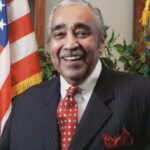Hoping to portray themselves as more affordable and all-around better neighbors, private colleges from Appalachia to Boston are sweetening financial aid packages for students from their own backyards.
The latest and most prestigious example is Northwestern University. By targeting local students in financial need, Northwestern is seeking to boost minority enrollment, strengthen local ties and stay competitive in the college admissions race at a time when many private schools are increasing aid based on student merit instead of financial circumstances.
“You may be thinking globally about your education curriculum,” David Warren, president of the National Association of Independent Colleges and Universities, said of such efforts. “But you’re increasingly acting locally with respect to students.”
Northwestern’s “Good Neighbor, Great University” scholarships will be awarded starting in fall 2011 to about 100 incoming freshman who graduated from high schools in Evanston, Ill., home to Northwestern’s main campus, and Chicago, site of its medical school. About 2,000 first-year students enroll at Northwestern annually.
Students whose families show financial need — there is no income cut-off — will be eligible for scholarships replacing loans and payments from work-study. The majority of students who qualify will receive enough aid to fully cover the cost of Northwestern’s $40,223 annual tuition and fees, said Michael Mills, associate provost for university enrollment.
The program was recommended by a university task force on diversity and inclusion, which was formed following racial tensions on campus, including a controversy last fall over two students who dressed up in blackface for Halloween.
After its black student enrollment peaked at nearly 10 percent during the Carter administration, Northwestern experienced a slow and steady decline, Mills said.
This year’s incoming freshman class is about 7.2 percent black, up from 4.5 percent three years ago, which Mills attributed in part to better outreach to Chicago Public Schools and waiving the $65 application fee for its students. The university expects to enroll 60 CPS graduates in this fall’s freshman class, up from 28 in fall 2008.
Turning again to Chicago for the new scholarship program seemed a logical step considering the city’s racial diversity and the strong Chicago connections of faculty and board members, he said.
Joshua Williams, 22, a 2010 Northwestern graduate who graduated from high school on Chicago’s South Side, sought Northwestern out rather than being courted. A debater and poet who was raised by his grandmother, Williams settled on Northwestern as a high-school sophomore, attended a summer debate camp there and won financial aid to cover tuition.
“Now we see a Northwestern that has a new face, that is more proactive, reaching out to public schools,” said Williams, who is African American and served on the diversity task force.
In developing the new scholarship program, Mills said Northwestern also was searching for answers after watching too many accepted students take merit-based scholarships at comparable and lesser schools.
“You’ve got all the evidence in the world to show kids you’ve recruited are smart enough to get admitted and predisposed to attend Northwestern, then you watch them sort of get plucked away,” he said.
The program should help local families that traditionally have earned too much to get a free ride and too little to afford Northwestern, said Patrick Tassoni, college coordinator at Chicago’s Northside Preparatory High School.
“Many colleges are saying, ‘You’re accepted, please send your $20,000 check to …’” Tassoni said of the plight of middle-income families. “That’s when families really start to compare the different financial aid packages at schools. Maybe now, more moderate-income families will be less apprehensive to apply to Northwestern.”
Among other private colleges that are going local with new or expanded financial aid, some directly tied to students’ financial need and others not:
– Last fall, Davis and Elkins College in rural West Virginia started offering discounted tuition to freshmen from seven nearby counties to make its cost comparable to that of West Virginia University. The small Presbyterian college says it was seeking to both reach enrollment targets and deepen ties to the area, which has low median household incomes and college attendance rates. The freshmen class from those counties grew from 16 in 2009-09 to 87 in 2009-10, and this fall is projected at 122, officials say.
– Also last fall, the University of Evansville began offering up to $18,000 a year, for up to four years, to all high school graduates or permanent residents of Vanderburgh County, Ind., its home county. School officials say their main motivation is to get more students living on campus and fully experiencing college life. Living in campus housing is required.
– Boston University in 2008 announced expanded aid to Boston Public School students, replacing loans with grants to eligible students who meet academic targets and do 25 hours of community service per semester. The average family income of recipients is $68,000, said Laurie Pohlm, vice president for enrollment and student affairs. Along with keeping up local relations, Pohlm said BU is seeking a competitive edge for the best students in its primary markets — more important because the number of high school graduates nationally is projected to dip in the next five years.
– In Worcester, Mass., the red brick buildings of the College of Holy Cross literally loom over the city, seemingly out of reach of many working-class residents. So in 2008, the 2,700-student college began offering free tuition to city residents whose families earn less than $50,000 a year — also roughly what it costs to attend Holy Cross each year.
“Our local kids felt, ‘Holy Cross, ooh, that sticker price,’” said Lynne Myers, director of financial aid. “We wanted a clear understanding that we are your neighbor, we’re sitting right here on the hill, and we want to be accessible to you.”
Annie Le, raised by a single mother on disability and welfare, is one of 23 students who have taken the offer.
“I’m the first girl in my family to go to college. My mom didn’t want me to go away, and now she’s just a few minutes away,” said Le, who was also able to keep her job waitressing at a pancake restaurant. “It just made it a lot easier.”
Associated Press






